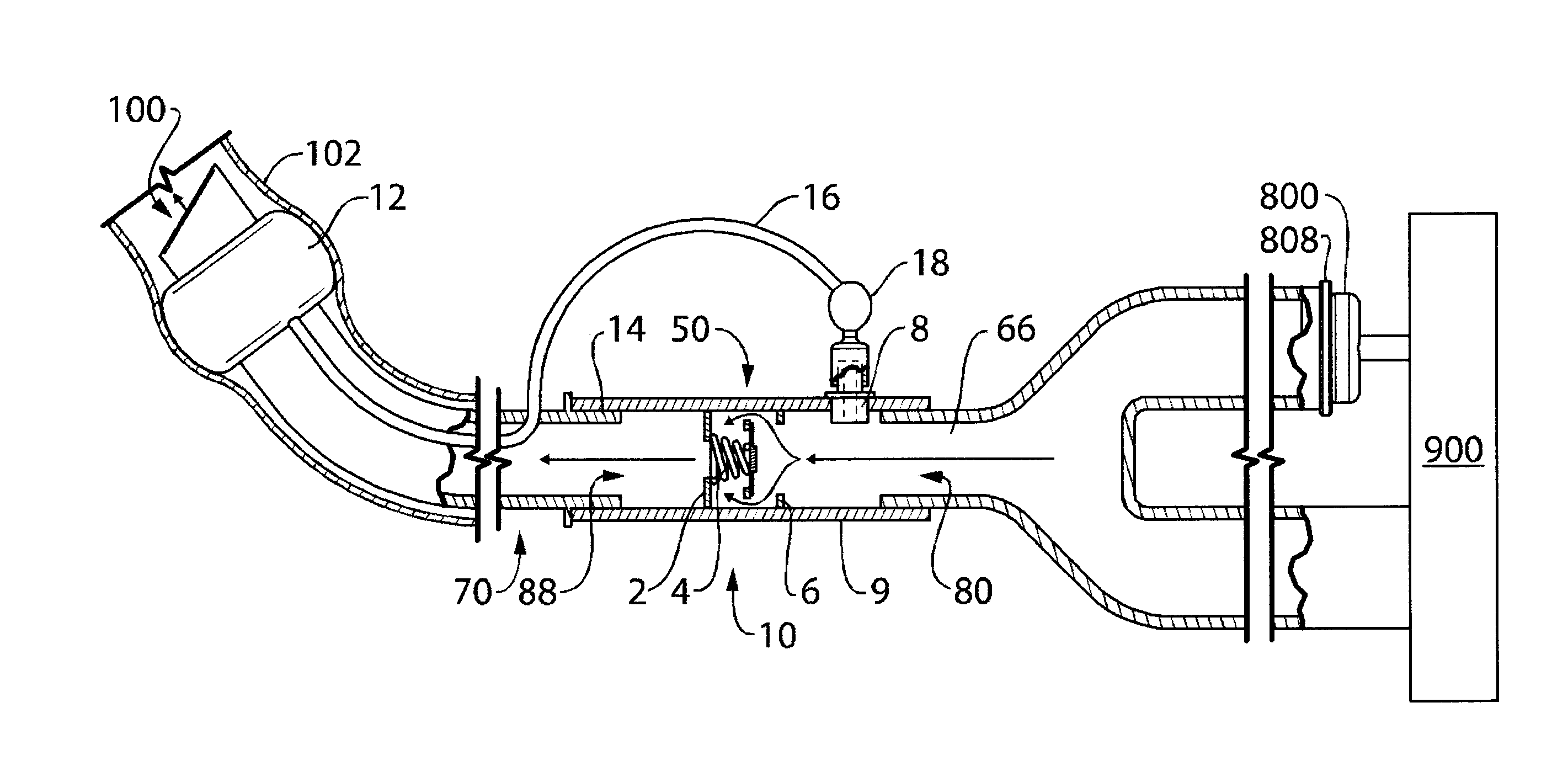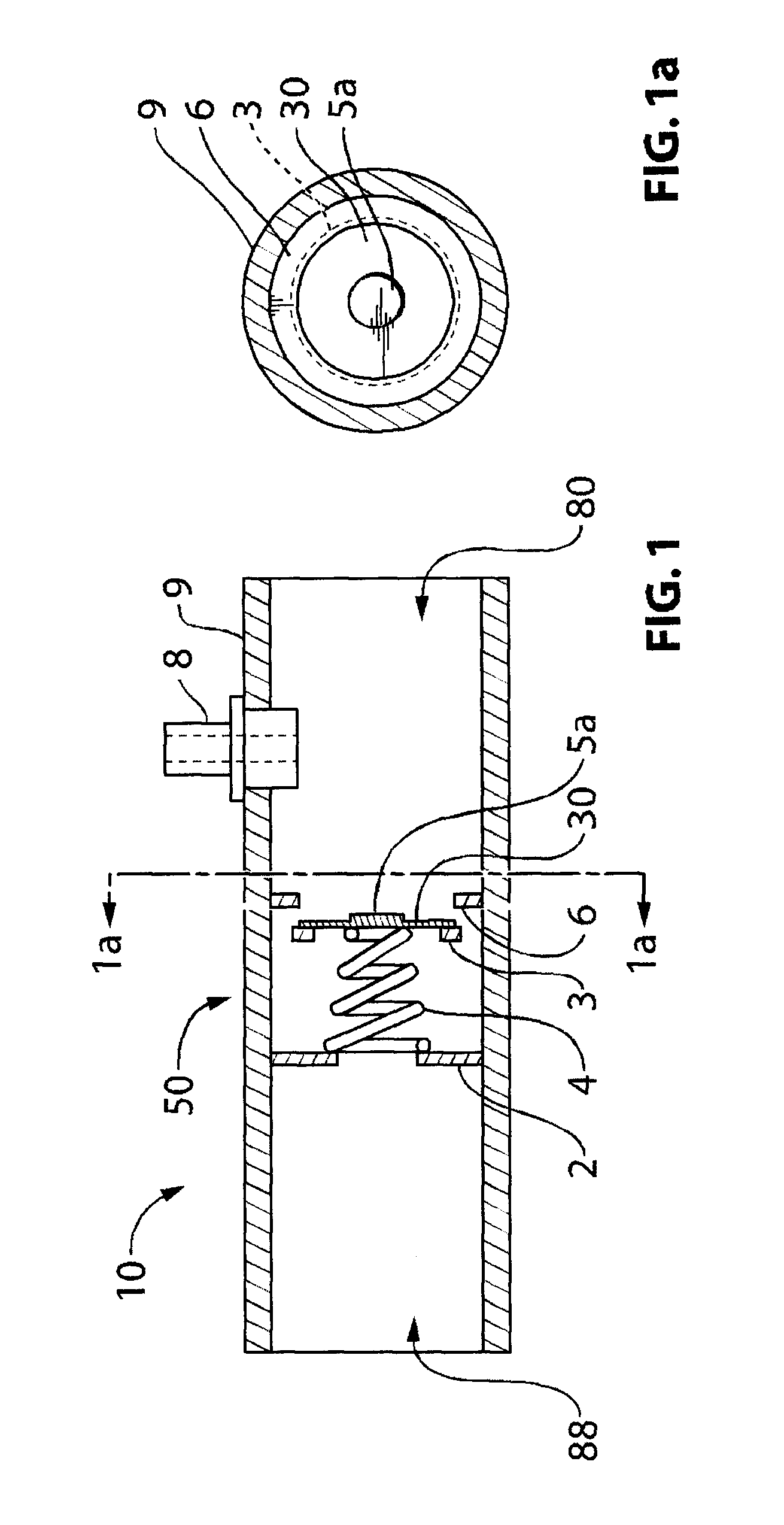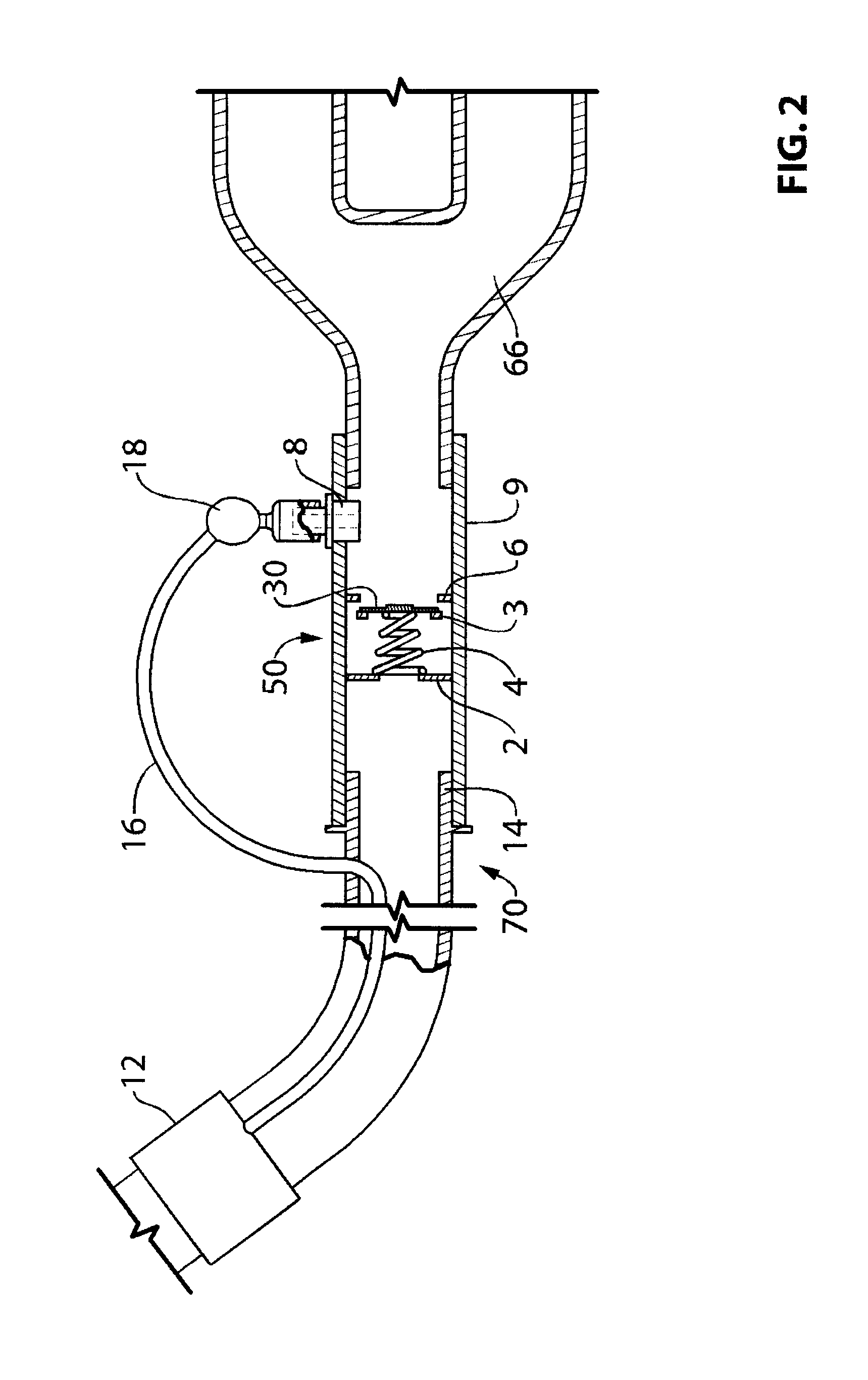Endotracheal cuff pressure regulation circuit and method
a technology of pressure regulation circuit and cuff, which is applied in the direction of valves, mechanical devices, operating means/releasing devices, etc., can solve the problems of ischemic necrosis, difficulty in determining the correct position and herniation of the cuff, and the potential to cause severe subglottic stenosis, so as to prevent lung infection and mitigate the effect of endotracheal tube related laryngotracheal injury
- Summary
- Abstract
- Description
- Claims
- Application Information
AI Technical Summary
Benefits of technology
Problems solved by technology
Method used
Image
Examples
example 1
Summary
[0094]PATIENTS: Ten piglets (16-20 kg) were anesthetized and intubated using a cuffed endotracheal tube.
[0095]INTERVENTIONS: The animals were randomized into two groups: 5 pigs had a novel device to modulate their cuff pressure between 25 cm H2O during inspiration and 7 cm H2O during expiration; 5 pigs had a constant cuff pressure of 25 cm H2O. Both groups were ventilated under hypoxic conditions for four hours.
[0096]MAIN OUTCOME MEASURES: The animals were sacrificed and the larynx and trachea harvested for blinded histopathological assessment of laryngotracheal mucosal injury.
[0097]RESULTS: The cuff pressure-modulated pigs showed significantly less laryngotracheal damage than the constant cuff pressure pigs (mean grade 1.2 versus 2.1, P0.05).
Methods
[0098]The study had the full approval of the local Research Ethics Board and the Animal Care Committee. Ten female piglets, weighing 16-20 kg, were anesthetized and intubated using a cuffed endotracheal tube. The animals were rand...
PUM
 Login to View More
Login to View More Abstract
Description
Claims
Application Information
 Login to View More
Login to View More - R&D
- Intellectual Property
- Life Sciences
- Materials
- Tech Scout
- Unparalleled Data Quality
- Higher Quality Content
- 60% Fewer Hallucinations
Browse by: Latest US Patents, China's latest patents, Technical Efficacy Thesaurus, Application Domain, Technology Topic, Popular Technical Reports.
© 2025 PatSnap. All rights reserved.Legal|Privacy policy|Modern Slavery Act Transparency Statement|Sitemap|About US| Contact US: help@patsnap.com



